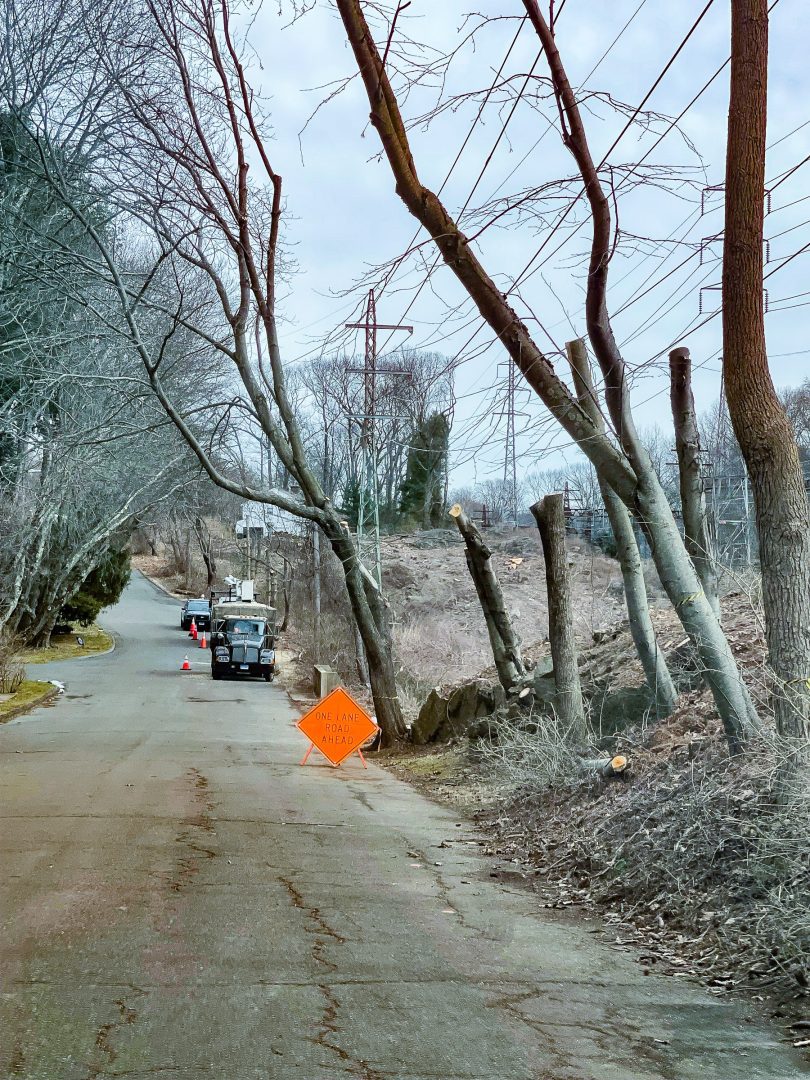Last month I gave a talk at the Darien Library called “The Power of Trees”. We talked about the essential role that all trees — especially our large, mature trees — play in our lives, capturing and storing carbon dioxide and releasing oxygen, filtering polluted air, filtering water, cooling the air and providing flood mitigation and erosion control services. And we talked about the biodiversity support systems that native trees provide, and which are critical for our food security and health. My co-presenter, Meaghan Hetherington, spoke about the physical and mental benefits of trees. We only had time to skim the surface of other benefits we derive from trees, such as making our towns more livable and improving our property values. We attracted a large audience, almost filling the Library’s community room, and I left feeling optimistic that such a clear demonstration of public interest in trees might help inspire changes at both the state and local levels that would implement protections for our existing tree canopy and plans for its growth.
What is the urgency? A 2021 study by UConn showed that Darien’s temperature has increased 10 degrees in the past 2 decades and the Western Council of Governments has published studies concluding that Darien has one of the highest levels of impervious surface and one of the lowest tree canopies in the region. These studies were published before Eversource removed hundreds of trees and before the Corbin District and Noroton Heights developments. I assume our rankings would be even lower now and if they aren’t, they likely soon will be. A proposed project at Thorndal Circle would result in a net loss of 60 trees and the replacement of hundreds of other mature trees with smaller ones. I understand that, in the course of a project, some trees may need to be removed, but we should not accept any proposition that assumes development must result in a net loss. (We have seen this kind of thinking in connection with extensive tree removals at Weed Beach where there was no plan (and no funding) for adequate replacements.) It’s worth remembering that every 10 years our town creates a “Plan of Conservation and Development,” and not simply a Plan of Development.
In addition to concerns expressed by P&Z members over the extent of development in Darien and the consequent strain on town resources, there are other impacts: How will we stabilize our temperatures with the loss of ever more trees and the creation of ever more impervious surface? What will be the effect on our air and water quality? Are these effects even being monitored? A few trees donated to the Land Trust — as has been done in the past — may be generous but makes little difference to our commercial, built areas. A rain garden, while always welcome, is not equivalency for the loss of services provided by hundreds of mature trees.
Our town commissions need a framework that would allow them to make decisions that fully balance the risk of truly harmful environmental (and health) consequences with otherwise sound commercial proposals. Other towns and cities have protective tree ordinances and many are actively seeking federal and state grants to help grow their tree canopies. It’s time we implemented some changes. As I said in my talk, action at the town level would not only help us become more resilient to these external threats, but would also educate and influence all of us to become better stewards of our own trees.
Juliet Cain
Darien, CT
—
Cain has served on a variety of state and local boards focused on forestry and environmental issues

